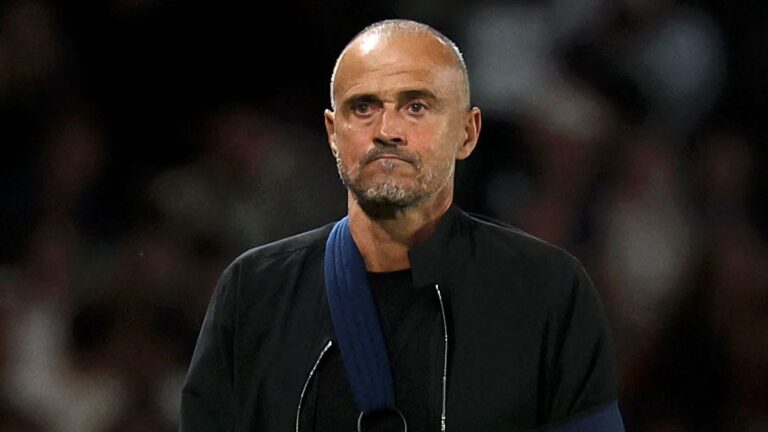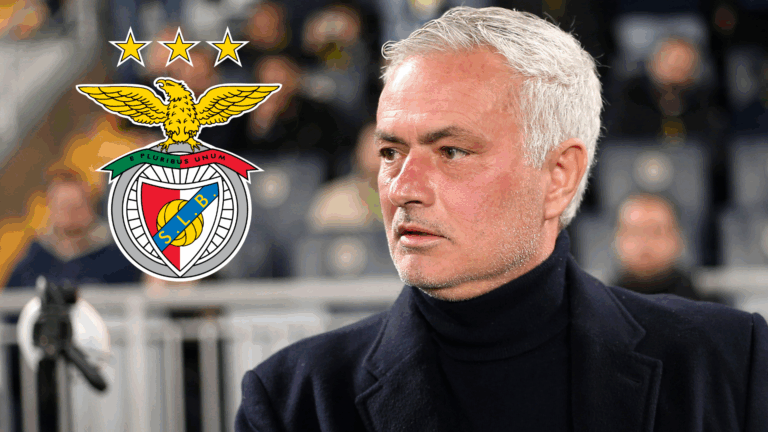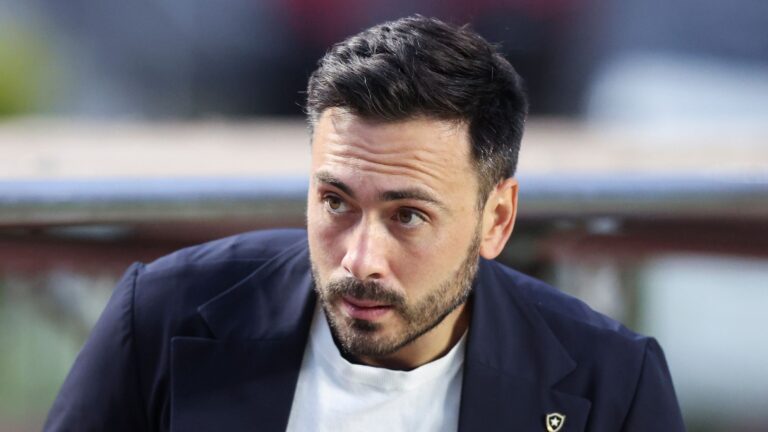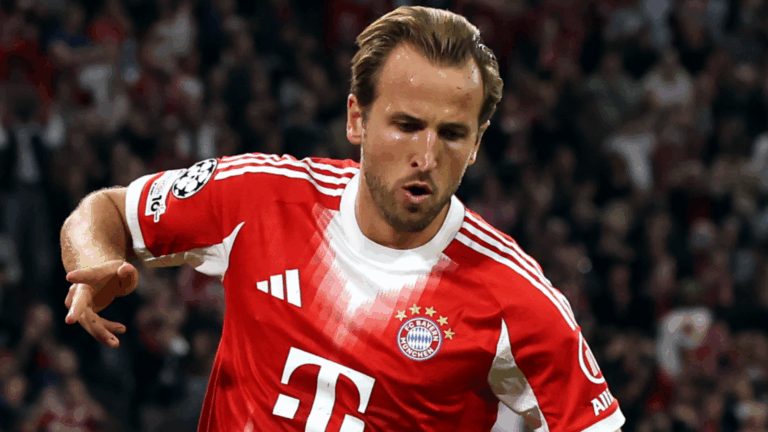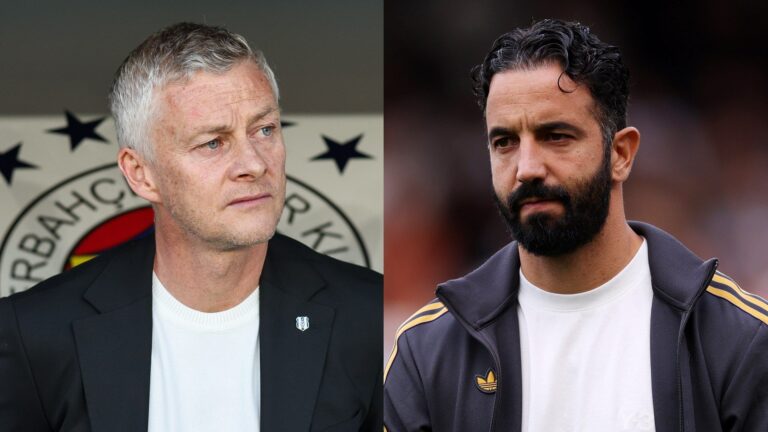They called it “The Miracle at Lusitano.” It was the 90th minute of Vermont Green’s regular season fixture with Western Mass Pioneers, and they were in trouble. The Green trailed 2-0, and – needing just a point to secure the USL League Two Northeast Division title and keep their undefeated season alive – were on the verge of it all unraveling.
Until that point, it had been a night of frustration, missed chances, and attempts thrown away. And then, in the 95th minute, hope. A floated ball fell to the feet of Zach Zengue, who controlled and volleyed home. The next four minutes were carnage. But amidst the chaos, Owen O’Malley found himself in a slither of space in the box. He cut to his right, and fire, and his shot looped over the goalkeeper.
Vermont tied the game, secured the division title, and remained invincible.
“That,” club co-founder Matthew Wolff, a graphic designer from New York, told BALLGM, “was the moment that we realized that this group was really special.”
It was just one of a plethora of memorable moments for the Green, who rolled through the USL League Two season with relative ease, and clinched the league championship Sunday with a 2-1 win over Ballard FC.
But, perhaps more important than the win was what it meant for the state. With an NCAA national championship to celebrate last December and now a USL League Two title to enjoy, the pocket of land in New England is now very much on the soccer map. Football hipsterdom has become mainstream, and Vermont, buoyed by the Green’s championship run, is now the epicenter of a movement.
“It’s almost like a religious experience,” Wolff said. “It’s a soccer revolution that’s happening here.”





They called it “The Miracle at Lusitano.” It was the 90th minute of Vermont Green’s regular season fixture with Western Mass Pioneers, and they were in trouble. The Green trailed 2-0, and – needing just a point to secure the USL League Two Northeast Division title and keep their undefeated season alive – were on the verge of it all unraveling.
Until that point, it had been a night of frustration, missed chances, and attempts thrown away. And then, in the 95th minute, hope. A floated ball fell to the feet of Zach Zengue, who controlled and volleyed home. The next four minutes were carnage. But amidst the chaos, Owen O’Malley found himself in a slither of space in the box. He cut to his right, and fire, and his shot looped over the goalkeeper.
Vermont tied the game, secured the division title, and remained invincible.
“That,” club co-founder Matthew Wolff, a graphic designer from New York, told BALLGM “was the moment that we realized that this group was really special.”
It was just one of a plethora of memorable moments for the Green, who rolled through the USL League Two season with relative ease, and clinched the league championship Sunday with a 2-1 win over Ballard FC.
But, perhaps more important than the win was what it meant for the state. With an NCAA national championship to celebrate last December and now a USL League Two title to enjoy, the pocket of land in New England is now very much on the soccer map. Football hipsterdom has become mainstream, and Vermont, buoyed by the Green’s championship run, is now the epicenter of a movement.
“It’s almost like a religious experience,” Wolff said. “It’s a soccer revolution that’s happening here.”
It has been a hectic and prolific nine months of soccer in Vermont. First, their Catamounts made the impossible true, and beat Marshall to secure a collegiate championship. That win sparked riotous scenes on campus, hundreds of students coming out in the harsh New England winter to celebrate the side – who arrived with a College Cup trophy and a police escort.
Their victory came against the odds, in a landscape in which nine of the last 10 NCAA Championships had been won by a Power 5 school.
A few months on, head coach Rob Dow is still buzzing.
“I can’t let it go, even if I am happy to turn the page and ready to move on to the next chapter,” he told BALLGM.
The Catamounts’ run was defined by a series of perceived impossibilities: upsets, late goals, perfect circumstances all aligning in the exact right way to allow for the kind of once in a generation run. They got hot at the right time, and rode the wave.
Vermont Green, meanwhile, have been a constant. They made it look very easy, very early, winning their first four and conceding just once across that quartet of games. At no point did they drop points for two consecutive fixtures.
They allowed a mere eight goals during regular season play, and had no struggle putting the ball in the net.
When it came to playoff soccer, they made things a little harder on themselves. The Green might have gone out in the conference semifinals, and were 2-0 down to Motown II after 47 minutes. But they struck rapidly, scoring three in eight minutes to take the lead – before hunkering down to win the game.
“Even when we went down in the playoffs, it never felt like we were going to be out,” Wolff said. “You could really feel something special happening during the playoff run.”
And America started to take notice. The Green had been a subculture for some time, helped by their enticing branding, Yerba Mate sponsor, and support from United States Senator Bernie Sanders. Wolff and his cofounders pieced together a captivating brand.
All of their kits are made from recycled water bottles, and fans are encouraged to recycle and donate old jerseys at home matches. Volunteers collect and sort through recycling at the end of every game. This Vermont franchise is likeable, and also really rather good.
As such, Lionsbridge were comfortably swept aside before a dramatic penalty shootout win set up an enticing final with Ballard.
Zoom out, and there was never going to be a loser. Ballard, based in Seattle, are the Vermont of the West, also community-focused, equally likeable, and exceedingly cool.
But narratives exist for a reason, and the Green executed theirs. In style.
“It just feels incredible to be able to complete the perfect season in front of our fans who really backed us all the way into the last minute of the last match,” Wolff added.
And of course, all of the plaudits have followed. Tifos dubbing their home stadium the “Berniebeu” went viral on social media. One local paper dubbed Burlington “the soccer capital of America.”
Wolff spoke to BALLGM on his way home from a meeting about the club’s future. It was less than four days since they had lifted the trophy in front of ecstatic home supporters, and he and the decision makers – eager to capitalize on the opportunity – were already thinking about the future.
It’s a tough one. Vermont have been successful, yes, but that now comes with an undeniable responsibility. They have to back it up – if not elevate it – not only in performance, but also in decision-making.
If this really is the soccer capital of America, then the Green have to do everything they can to influence it, Wolff argued.
“I think we have a responsibility to our community, to have an excellent product on the pitch, but also continue to do what we can to grow the game, from an infrastructure standpoint, from the women’s side,” he said.
He might be right, too. Demand is outstripping supply. Tickets sell out in seconds. Jerseys fly off the shelves. Local fans, in particular, are absolutely ravenous. To be sure, that presents marketing opportunities, and will only help Vermont Green, the brand, grow.
But Wolff is thinking more broadly, about Vermont, the state that wants to help soccer grow.
“The demand for football is, at the moment, totally outweighing the supply of football infrastructure,” he said. “We’re selling out in seconds. We’re doing everything we can to expand access as quickly as possible to our matches. This city and this state need more pitches. They need more stands. They need more referees. They need more coaches.”
Nice problem to have? Certainly.
But that doesn’t make the solutions any easier. It’s a lot to handle. Vermont, remember, are still an amateur team. They won’t kick a ball again in a competitive capacity for 10 months.
Promotion to a higher level is possible, but that is a scenario for the future. Women’s football, too, is top of mind. That will mean more money, more staff, more investment.
Still, when Wolff thinks about the memories of dramatic wins, sees the pictures from jubilant fans, and watches kids wait for autographs after the game, all of those tasks seem possible – no matter how significant the ask.
“I can see the way these kids look up to them, literally and figuratively, and inspire them, and that is what’s going to solidify Vermont as a soccer state. It’s the youth movement,” he said.
And that might be enough, at least for today. Vermont is, after all, the epicenter of a soccer revolution.


